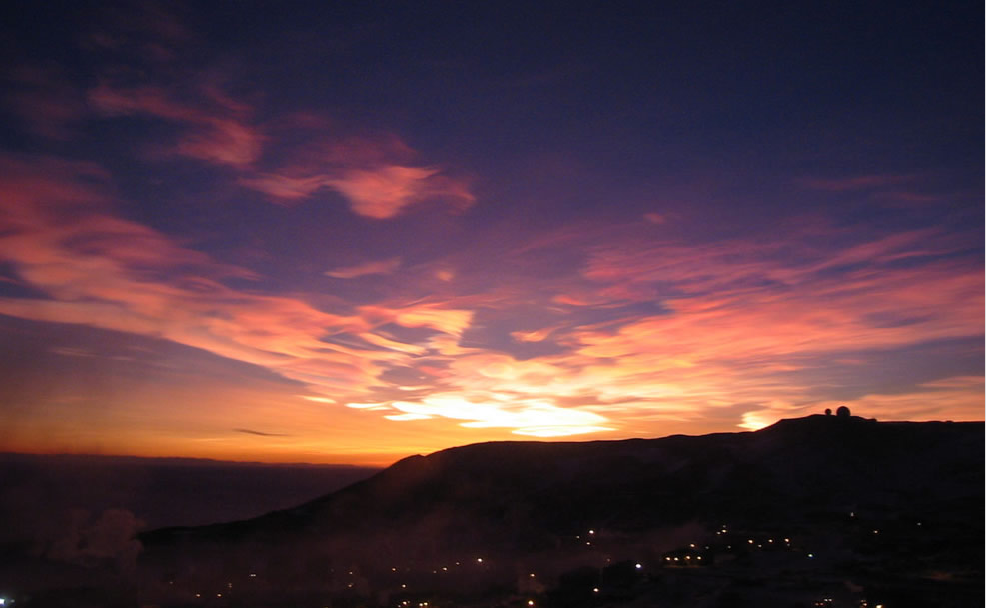Nacreous clouds - McMurdo Station, Antarctica
Nacreous Clouds: A Phenomenal Sight at McMurdo Station, Antarctica
Have you ever heard of nacreous clouds? These stunning and rare atmospheric phenomena are a sight to behold. They are characterized by their vibrant and iridescent colors, often resembling mother-of-pearl or the inside of a seashell. While they can occur in various parts of the world, one place where they are particularly captivating is McMurdo Station, Antarctica.
What are Nacreous Clouds?
Nacreous clouds, also known as polar stratospheric clouds (PSCs), form in the stratosphere at altitudes of around 15 to 25 kilometers (9 to 16 miles) above the Earth's surface. Unlike most other clouds that form in the troposphere, these unique clouds develop in the extreme cold of polar regions during the winter months.
The Science Behind Nacreous Clouds
The formation of nacreous clouds is closely tied to extremely low temperatures and specific atmospheric conditions. When temperatures drop to below -78 degrees Celsius (-108 degrees Fahrenheit), water vapor in the stratosphere freezes into ice crystals. These ice crystals then provide a surface for the condensation of nitric acid and sulfuric acid, which are present in the stratosphere due to pollution from human activities.
A Kaleidoscope of Colors
One of the most mesmerizing aspects of nacreous clouds is their vibrant display of colors. The iridescent hues result from the diffraction and interference of sunlight as it passes through the tiny ice crystals in the clouds. This phenomenon is similar to what happens when light passes through a prism, creating a spectrum of colors. The unique combination of ice crystal size and shape determines the specific colors observed, ranging from vivid blues and greens to soft pinks and oranges.
McMurdo Station: A Prime Location for Nacreous Clouds
Located in Antarctica, McMurdo Station provides an ideal vantage point for observing nacreous clouds. The station is situated near the coast of the Ross Sea, where cold air masses from the Antarctic continent mix with warmer air from the ocean. This convergence creates the perfect conditions for the formation of these stunning cloud formations.
The Unpredictability of Nacreous Clouds
Nacreous clouds are notoriously difficult to predict. They are often associated with strong polar vortex events, which create stable atmospheric conditions conducive to their formation. However, even during periods of favorable conditions, the appearance of these clouds can be sporadic and fleeting. They are most commonly observed during the polar winter when the sun is below the horizon, casting an ethereal glow on the icy landscape.
Studying Nacreous Clouds
Scientists and researchers are fascinated by nacreous clouds because they provide valuable insights into the chemistry and dynamics of the stratosphere. By studying the composition of these clouds, scientists can better understand the impact of human activities on the Earth's atmosphere, particularly in relation to ozone depletion and climate change.
The Importance of Nacreous Clouds
Nacreous clouds not only captivate our eyes but also serve as a reminder of the fragility and interconnectedness of our planet's atmospheric systems. Their formation is closely linked to human-induced pollution and the subsequent depletion of the ozone layer. By raising awareness about these unique cloud formations, we can further emphasize the need for environmental stewardship and responsible practices to protect our planet.
Capturing the Beauty
Photographers and enthusiasts flock to McMurdo Station in hopes of witnessing and capturing the mesmerizing beauty of nacreous clouds. The ethereal nature of these clouds makes them a subject of fascination and inspiration for artists and nature lovers alike. Through their lenses, they immortalize these ephemeral moments, preserving them for generations to come.
A Spectacular Natural Phenomenon
In conclusion, nacreous clouds are a truly spectacular natural phenomenon that grace the skies above McMurdo Station in Antarctica. Their radiant colors, formed by the interplay of sunlight and ice crystals, create a visual spectacle that is both awe-inspiring and humbling. As we continue to explore and understand the intricacies of our atmosphere, these captivating clouds remind us of the delicate balance we must maintain to preserve the beauty of our planet.

McMurdo Station, Antarctica 9th August 2005 imaged by Julie Friedman. Sunrise did not occur until a week later, here it is at least 3° below the horizon. Image ©2005 Julie Friedman, shown with permission.
Note: this article has been automatically converted from the old site and may not appear as intended. You can find the original article here.
Reference Atmospheric Optics
If you use any of the definitions, information, or data presented on Atmospheric Optics, please copy the link or reference below to properly credit us as the reference source. Thank you!
-
<a href="https://atoptics.co.uk/blog/nacreous-clouds-mcmurdo-station-antarctica/">Nacreous clouds - McMurdo Station, Antarctica</a>
-
"Nacreous clouds - McMurdo Station, Antarctica". Atmospheric Optics. Accessed on April 18, 2024. https://atoptics.co.uk/blog/nacreous-clouds-mcmurdo-station-antarctica/.
-
"Nacreous clouds - McMurdo Station, Antarctica". Atmospheric Optics, https://atoptics.co.uk/blog/nacreous-clouds-mcmurdo-station-antarctica/. Accessed 18 April, 2024
-
Nacreous clouds - McMurdo Station, Antarctica. Atmospheric Optics. Retrieved from https://atoptics.co.uk/blog/nacreous-clouds-mcmurdo-station-antarctica/.